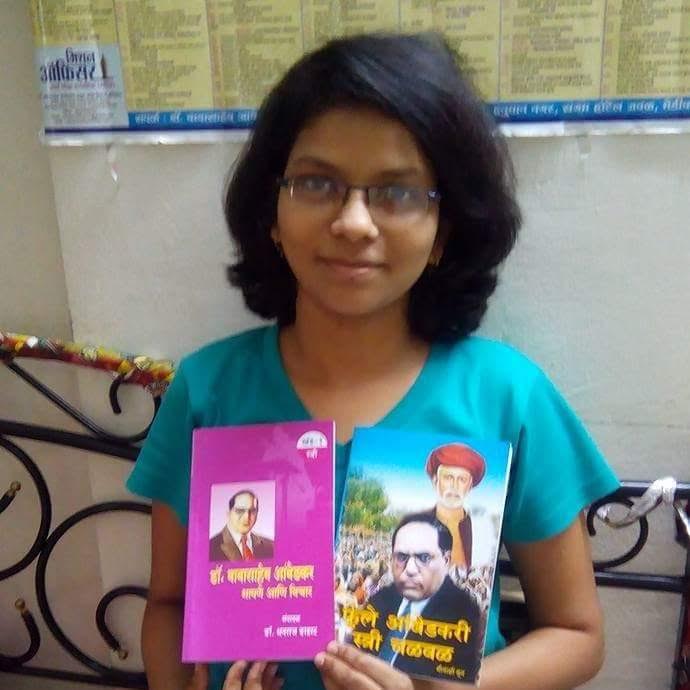Dr Amritpal Kaur
Women have gained many legal and reproductive rights, as well as more freedom to pursue higher education and enter previously male dominated professions through a long, hard and honourable struggle. The more legal and material obstacles women have broken through, the more severe and heavy the backlash, in the form of detrimental portrayal of female beauty, have come to weigh upon them. As women gained some control by loosening the grip of feminine mystique of domesticity, motherhood, chastity, religiosity and passivity, the beauty fallacy took over the lost ground in order to demolish all good things earned by women by injecting them with feelings of guilt, self-hatred, terror of aging, physical obsession, loss of self-integrity and self-worth.
The beauty myth upholds narrow and restrictive definitions of beauty for reinforcing the burden of Lookism (constantly judged by their looks) upon women. This promotes unhealthy body image obsessions and potentially harmful beauty procedures. The cosmetic industry, diet industry, cosmetic surgery industry and pornography industry have scaled new heights in the last few years by falsely feeding upon the collective insecurities of women about their looks, their conscious and unconscious anxieties and apprehensions. The unrealistic beauty parameters weigh them down heavily giving rise to a whole generation of women troubled and hassled with the way they look. The more materially a woman grows and more prominent and successful in society she becomes, the expectation of how she should look becomes more difficult for her to achieve. The pressure they feel to adhere to unrealistic standards of physical beauty also grows stronger because of commercial influences of mass media which are obsessed with the appearance of women.
The beauty myth is a powerful force that keeps women focussed on and distracted by body images and provides both men and women with a way to judge and limit women due to their physical appearance. The daily presence and consistent circulation of the beauty myth through platforms like women’s magazines, beauty magazines, beauty salons and parlours, gyms, large hoardings displaying women’s assets, TV commercials, etc makes escaping from these ideals almost impossible. These ideals are commercially advertised and marketed as attainable through diet courses, gym memberships, beauty treatments packages (bridal packages, mom to be packages) and cosmetic surgeries.
The beauty myth says that beauty in a woman is based on sexual selection and hence is inevitable and changeless. It is a quality that exists universally and all women must want to incorporate it and men must want to possess women who embody it. Strong men battle for beautiful women and beautiful women are more reproductively successful. Women’s beauty must correlate with her fertility and therefore beauty is biological, sexual and evolutionary. Well, none of this is true, as anthropology has proved that females need not be beautiful to be selected as mates.
Beauty, like the economy, is determined by politics. It is not based on evolution, sex, gender, aesthetics or God, but is a currency system composed of emotional distance, politics, finance and sexual repression (of women). The beauty myth is about unequal power relations. It is not about women as it prescribes behaviour not appearance. It is all about men’s institutions (economic, religious, social, cultural and moral), institutional power and keeping male dominance intact by culturally imposing physical standards on women. Any economy that depends on slavery will always promote images of slaves in order to justify the institution of slavery. Our economy rests on representing women within the beauty parameters by hiding behind the social virtue of beauty, the fact that women as consumers are essential for developing the industrial society.
The beauty incentive job market—including jobs in advertising, recording and film industry, as waitresses, bartenders, hostesses, catering staff etc—are flourishing by exploiting women’s physical appearance over their skills. These beauty incentive jobs not only provide a base for the innocent ambitions of rural and local girls (mostly from middle and lower strata of society), who enter the urban sphere with a dream of making huge money through the professions of fashion models and film stars. The high pay for models and film stars is a wrong representation of women’s actual economic status. Overpaying display professionals (capitalism) doesn’t allow the creation of an organised resistive force against this fantasised dominant cultural (of the upper castes) conspiracy. This keeps the low pay of other women’s real work unseen forever.
Women’s working clothes like high heels, stockings, tons of makeup, jewellery, hairdos and not to mention clothings that accentuate their breasts, legs and hips are nothing but pornographic accessories to enhance their sexual prettiness to increase the consumer economy and provide monetary gains to male dominated power institutions. These women are generally treated as harrassable trollops (it is believed that beauty provokes harassment). In hiring and promotions men’s and women’s appearance are judged differently as professional image and professional elegance respectively. For a man, maturity and seniority means power and prestige but women beside them need youth, beauty and solid makeup to reach the same professional level. The prettiness of women is considered to be their biggest qualification for professional success undermining their skills and hard work. Working single girls and women have to look sexy so that their work and singleness do not look like what they really are- serious, dangerous and tectonic. In the job market, the beauty backlash was created out of fear by the traditional power elite of men to drain surplus energy and lower the confidence of women in order to sustain the production of a cheap and docile labour force of female employers.
The beauty myth effectively works by constantly feeding three vital lies to women. First, beauty is a necessary and legitimate credential for women’s rise to power. Second, its discriminatory purpose must be masked by representing it as earnable by any woman through hard work and business. Three, women have to think that beauty is synonymous with the achievements of the women’s movement.
The informal rules and guidelines about the appropriateness of appearance keep shifting, which is the main reason behind the continuous appearance of women’s books and magazines which preach to women how they must look and behave at work in order to fit constantly into the dualistic experience of being feminine and businesslike at the same time. ‘A gorgeous figure doesn’t come without effort’, ‘make the most of your natural assets’, ‘you can totally reshape your body’, ‘your facial lines are now within your control’, ‘at last you too can know the secret beautiful women keep for years’, and many such advertising lines keep women consuming their products in awe of their complete personality transformation.
The aspirational claims and promises of women’s fashion and beauty magazines—that they can do it all on their own—appeals to women who have always been told that they can do nothing on their own, at a much deeper level. This consumer economy tactic also discourages women who are at the bottom of our social hierarchy from an investigation of the beauty myth system. Instead, it promotes victim blaming, and thereby persuades women to cut short their desires and self-worth in order to fit into the discriminatory system.
Women are treated as mere ‘beauties’ in men’s culture so that culture can be kept male. Beauties in the male culture are made to realise a harsh reality that the ethical lessons of their culture prohibits them from building their own individual identities. In this culture, men look at women while women watch themselves being looked at. This not only determines the relations between men and women, but also the relations of women among themselves. Male culture silences women by keeping them apart ‘beautifully’, always. Women are cultured to fit into the beauty myth, either by falsely manipulating feminine as beauty without intelligence or as intelligence without beauty. Thus, women are not allowed both a mind and a body at the same time.
This myth prescribes rites of beauty (rites in the form of a creed) that there is such a thing as beauty that is holy and every woman must seek to achieve it. Women crave perfection in beauty and body because they have been taught by all religions that their bodies are inferior to that of men and therefore remain in a constant need for a seal of approval from male authority in order to believe that they are beautiful. Whereas men age only in terms of social status, women start aging when flaws and fat start appearing on their face and body. Flaw is a mark of character for a man whereas for a woman it is a source of worry. The rites of beauty promise to give their face its lost finish.
Cosmetics’ saleswomen are trained in techniques used by cult promoters and hypnotists to sell ‘hope in a bottle’. They use sophisticated words like ceramides, primers, phytolastil, biologically active tissue peptides, hyaluronic acid, tropocollagen, protection, to communicate gibberish of science and mock science to women customers. Science says that there is no way one can prevent wrinkles or aging once they are out of the womb. The rites of beauty use cult methods to brainwash their customers with ultra fine and clever methods. Women buy these products and perform rites of beauty so religiously because they have internalised self-hatred as they have always been told that their femaleness and sexuality are not their own. Although they have gained some power over a few decades but not over their bodies.
Beauty myth as a cult was initiated with the purpose of social control of women and is tolerated because it has no power to effect cultural change. It is much safer for the patriarchal order to encourage and allow discontented women to express their wrongs through psychosomatic illness than to have them agitate for economic, sexual and legal rights. The same is true for body fat. The gym memberships, dieting programmes, crash diets, liposuction, cosmetic surgeries are all part of this beauty cult mechanism. These Rites teach women to fear their own futures, their own wants. Fear breeds narcissism which has disallowed women to bond together.
The beauty fallacy has not only made women internalise self-hatred and self-denial, it has also hits them simultaneously to suppress their true sexuality. Beauty pornography and beauty sadomasochism are the more cruel forms of beauty images which add guilt, pain and shame into sexual experiences of women. Magazine pages explicitly show beauty pornography in the form of semi-naked women with their mouths open, eyes shut, moisture droplets on their skin depicting the stage of arousal, orgasm phase just following, bare backs, bare buttocks, hands covering their breasts, lingerie showing cleavage, etc. What women learn from these images is that they have to look like that in order to feel like that. A woman learns that no matter how assertive she is in her professional and public life, she has to remain submissive in her private/sexual life to the male control in order to remain desirable.
Beauty sadomasochism is represented through images or advertisements where women are inflicted with pain or shame – men shown with a naked woman draped around their shoulders, women tied upside down, wrists looped in chains, women being beaten, abducted, etc. Such images are shot with artistic photography so that they look presentable. Beauty pornography and sadomasochism are dishonest because they claim that women’s beauty is her sexuality. They only show the official representations of the female body and reveal little about female desire or sexuality. If these images included real women and men showing mutual eroticism and real female desire, then they would hurt less.
The pressures of beauty pornography and achievements combine to hit the most vulnerable part of a woman’s life i.e the exploration of sexuality in relation to her sense of self-worth. Self (sexual) disgust and passivity in most women comes from learning the false and stubborn conventions of beauty pornography before they learn their own sexual worthiness. Unequal nakedness of men and women in these images represent the double standards of mainstream culture. Displaying breasts when the display of penises is simply unimaginable in a culture based on unequal power expressions. Culture screens breasts with exemplary meticulousness which rather pushes women to have their breasts cut open so that they can experience their sexuality through the beauty backlash. Sexual surgeries, especially breast enhancement surgeries, are a form of sexual mutilation, the number of which have been on the rise in recent years.
Why is it that we never hear of penis implants, penis augmentation, foreskin enhancement, testicular silicone injections to correct asymmetry, saline injections for size choices, surgery to correct angle of erection or to lift the scrotum to make it pert?? Even the prime of life i.e. the decades from 40 to 60 years, is represented as the time of men’s peak and women’s decline, whereas science says that these years represent women’s sexual peak and men’s sexual decline.
By locking up sex in the sphere of chastity to which beauty is the only key, the beauty myth uses politics (religious, cultural and economic) to repress female sexuality. This myth discourages women from seeing themselves as sexually beautiful. This fills them with a deep sexual shame and instills a self-critical sexual gaze in them. Beauty and sexuality are wrongly interlocked so that women feel that they must be beautiful to be sexual. Sexuality is innate to all women whereas beauty is not. Some are born beautiful and some are not. Beauty was redefined as sex because it is hard work and is not free, it has to be bought with money. Female sexuality is not only negatively defined but also made vulnerable because the limited sexual education available ensures this vulnerability.
Men’s sexuality is culturally accepted. They do not have to earn it with their appearance. Their desire precedes contact with women. It does not lie dormant waiting to spring into being only in response to a woman’s will. But scenes of young women’s sexual awakening in themselves do not exist. In a cultural vacuum, it’s hard to realise what solitary female desire looks like. Women’s bodies are portrayed as attractive packaging around an empty box and each woman has to learn for herself, from nowhere, how to feel sexual, though she learns constantly how to look sexual. They don’t have any ready-made positive culture of female lust looking outward, no descriptions of the intricate, curious presence of her genital sensations or the way she continually enriches her body’s knowledge. Only choice available to her is to absorb the dominant culture’s fantasies as her own.
What women learn is not desire for the other but the desire to be desired. This perspective of women on their own sexuality leads to confusion which is the solid ground for the beauty myth to flourish. This myth has successfully set a culture where men and women must continue to hurt and offend one another and neither can win as long as the power inequalities of beauty exist. Men who are aroused by the symbols of sexuality i.e beauty rather than sexuality of a woman are Fetishists. When men and women learn to look beyond the beauty myth, they also learn to build honest and happy relationships with higher erotic index. Trust and peace between men and women is a necessary prerequisite for a political as well as a sexual revolution. This is only possible when they learn to create a non-violent mutual heterosexual love which is not based on domination and pain.
The beauty myth is not about appearance but about making women feel ugly and continuing to feel ugly, self-conscious because they lack choice. The beauty myth industry exists because they make women feel invisible or inadequate without them. The actual struggle is between pain and pleasure i.e. compulsion and freedom. If we are given a choice to control our sexuality, then we will be able to build ourselves into solid personalities. For this to happen women have to take a stand and reject the forced dilemma of false choice provided by beauty myths. We have to realise that this myth is powerful because it has consumed a large part of female consciousness which in turn has stopped us from treating other women like our own by inculcating feelings of hostility and jealousy amongst us. As long as the definitions and meanings of beauty come from outside of us, they will continue to manipulate us.
The marketplace will never welcome any rise in consciousness as it will directly affect economic outcomes. But we need to take away power from these beauty images by turning away from them. Higher cheekbones and firmer bustlines will not provide us with real confidence and visibility. We need to commit to the basics of female progress involving religious, cultural and moral changes. The real beauty lies in breaking the beauty myth, particularly the sacredised version of feminine beauty. The youthfulness of mind, compassion and intellectuality in a woman, which challenges the world to change itself, in order to truly see through the imperfections of her face and body, must be the real definition of beauty.
~
References
- Vital lies, simple truth: the psychology of self deception by Daniel Goleman
- The Second Sex by Simone de beauvoir
- The sexuality of organisation by Jeff Hearn and Deborah L Sheppard
- Outrageous acts and everyday rebellions by Gloria Steinem
- The skin game : the international beauty business brutality exposed by Gerald McKnight
- Inside women’s magazines by Janice Winship
- Female desire :- women’s sexuality today by Rosalind Coward
- Pornography of representation by Sussanne Kappeler
- The beauty myth by Naomi Wolf
- The culture of narcissism by Christopher Lasch
~
Dr Amritpal Kaur is an Oral and Dental surgeon (BDS) from Jalandhar, Punjab. She has been a private practitioner for the last 13 years. She is a writer (on Ambedkarism, Buddhism and Feminism), a Social Thinker and a founding member of the National Council of Women Leaders.










